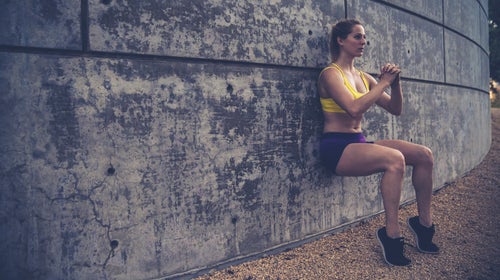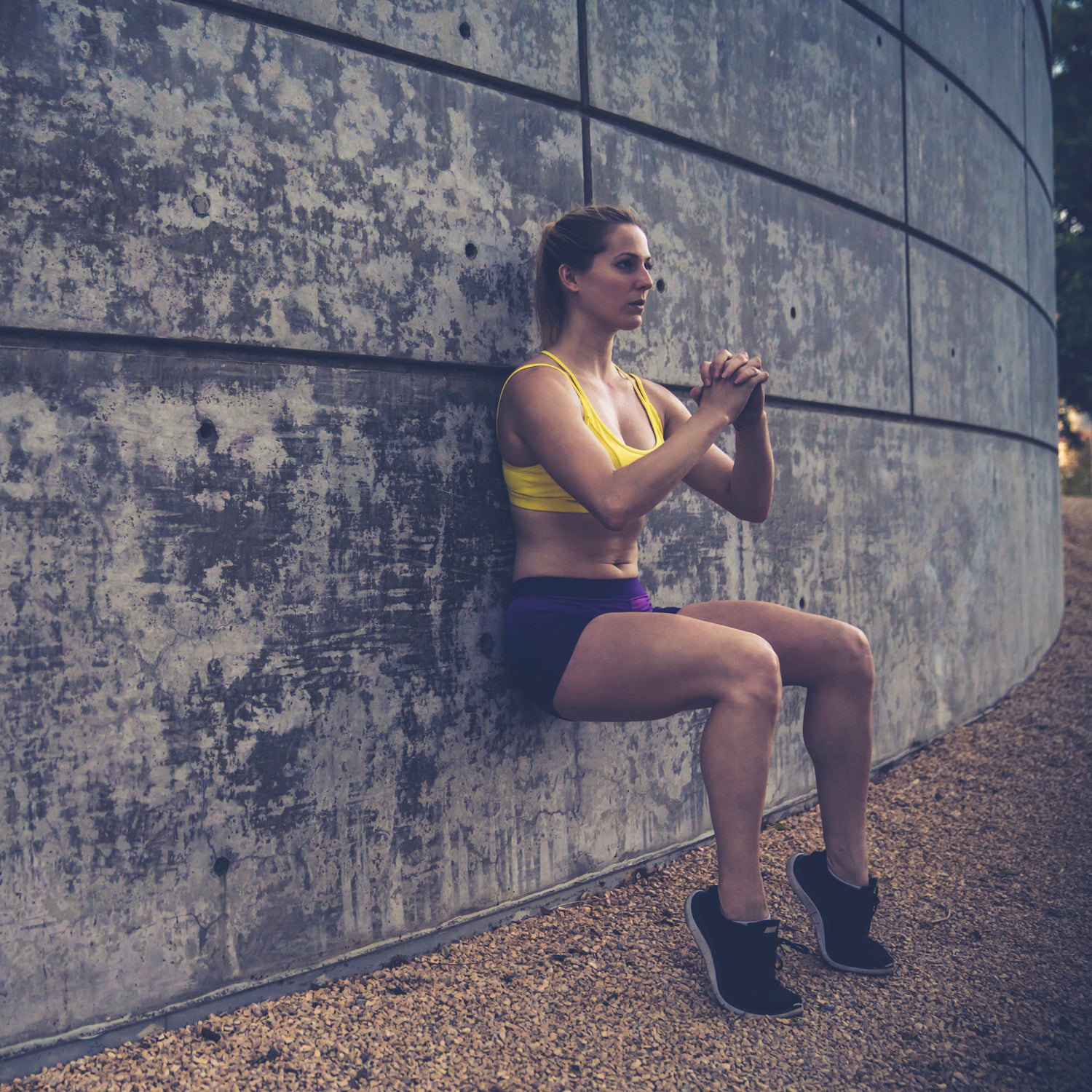Lance Walker, training director at the Michael Johnson Performance Center, near Dallas, is sitting behind his desk, looking over the results of my “movement screen,” a head-to-toe assessment of how well I bend, twist, stretch, and torque. I'm alarmed that most of the eight categories (Hurdle Step, In-Line Lunge, Seated Trunk Rotation, etc.) are highlighted with yellow “deficiency” alerts.
“You know what I see here?” Walker asks, scrutinizing the printout.
“Big problems?”
“Potential!” he shoots back, banging his fist on the desktop. “In a day I can improve your mobility. In a week, we could see gains in your functional movement.”
Every athlete, no matter what his or her level, has weaknesses. I've come to┬áMJPC┬áto find mine. Turns out I'm “overpowered.” For years I'd worked on my ability to go faster and farther, without thinking much about going, well, better. I could sustain almost 300 watts on a bike but couldn't complete a proper lunge without waving my arms like a drunken Yankees fan. That meant there was a load of untapped power locked away in my stiff hips. I could bench my body weight (190 pounds), but I couldn't hold myself in “plank” position for more than a minute and my weak core prevented me from translating whatever upper-body strength I had into meaningful power in the field. I was dancing before I'd fully learned to walk. If I continued to ignore these cracks in my fitness foundation, my real athletic potential would remain unfulfilled, and my chance of injury would steadily increase, since, as I┬áget older, my body is becoming less able to withstand the forces acting upon it. Time to get back to basics, said the┬áMJPC┬ácrew.
Michael Johnson, the Olympic sprinter who set a world record in 1996 while wearing gold track shoes (to match the medals he'd take home), opened this 20,000-square-foot facility in 2006 to help pros achieve their stratospheric goals and average Joes like me break out of their ruts. But before I even got near the cutting-edge vision-analysis lab or the infrared-timed sprint track, I was put through a full-day battery of basic tests that would reveal the weak links in my fitness chain.
At first, it seemed remedial to exhume these gym-class exercises, especially since most contemporary fitness clubs contain so much high-tech equipment that they've begun to resemble the command center at NORAD. Johnson's facility, while nice, was mostly filled with free weights and open floor space, around which I saw A-list athletes like New Orleans Saint Dan Campbell and top NFL inductees Michael┬áOher┬áand Brandon Pettigrew working out. This place, I soon realized, was about movement squatting, lunging, pushing, pulling, and other primal actions not just muscle.┬áLike other well-respected conditioning gurus, the crew at┬áMJPC┬áview athletic training as a pyramid: At the bottom are the fundamental “functional” movements, above that is power, and above that, skill. If you're not able to do the basic movements maybe you're too stiff in the shoulders or flimsy in your core all the power and skill in the world won't help you reach your potential.
I returned home after a couple of days, clutching my report card and ready to overhaul my training. On the pages that follow, you'll find the results of that fitness makeover, delivered as a series of tests and exercises that we're calling the ║┌┴¤│ď╣¤═° Challenge. Since we don't believe in one-size-fits-all training programs, take this for what it is: a great way to identify (and then fix) your weak spots and build a rock-solid platform. We've broken it down into five primary dimensions: Functional Flexibility, Core Stability, Long-Range Power, Strength, and Recovery & Nutrition. Pass all the tests and we'd say you're ready for just about anything: climbing a big peak, training for a marathon, thrashing your buddy in the city tennis tournament.
Don't panic if you can't nail them all or even any of them at first. We made them tough so they could serve as goals and, once you've progressed, as yardsticks. Each is accompanied by several exercises to help get you there. Splice them into your existing regimen, or toss out your old approach altogether and start anew.
That's what I did, and within a few months I began to discover the potential that Walker was talking about. I'd become a better, more balanced athlete and not because I was working harder. I felt like I'd discovered something magical, but the truth was simpler: I was working smarter. And I didn't even have to study.
Fitness Test #1: Functional Flexibility
Functional flexibility is your ability to move completely through the range of motion required for a sport or activity. Any number of factors age, desk jobs, too much time watching┬áSportsCenter┬ámake muscles chronically tight, limiting your full power potential and increasing your risk of injury. “Far too many athletes treat flexibility as an afterthought,” says┬áMJPC's┬áLance Walker. “It needs to be up there with the most important things we focus on.” These tests┬ágauge┬áflexibility in your core, where most problems lie.
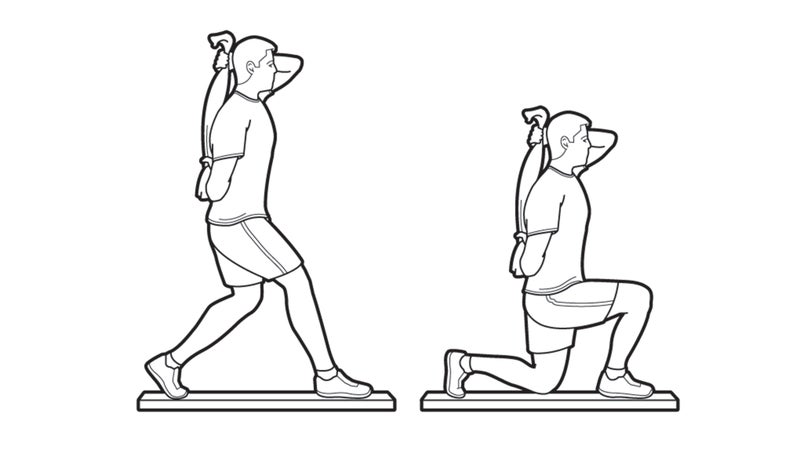
In-Line Lunge
Lay a two-by-four on the ground and stand on it so your right foot is several feet ahead of your left. Grab a towel and hold it in your left hand, behind your head, so it hangs down your back. Reach behind with your right hand and hold the loose end of the towel. Now lower into a lunge, until your left knee touches the board, and stand back up slowly. Switch feet and hands and try the other side. The goal is to keep your front heel on the board and to perform the motion without wobbling.
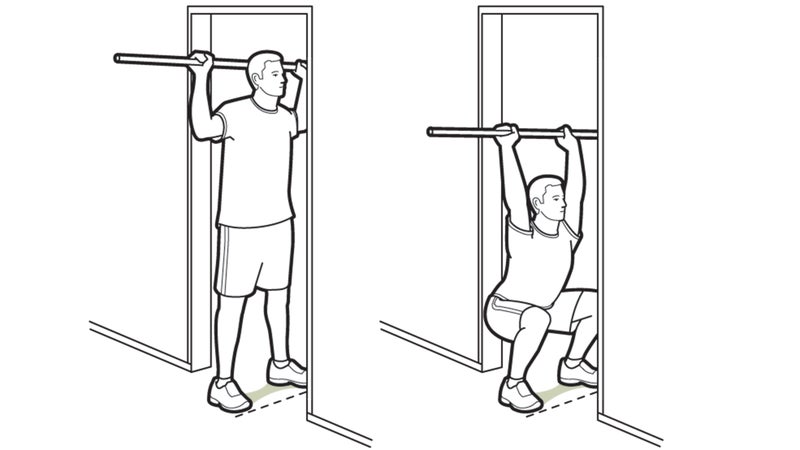
Depth Squat 
Make a line with tape in a doorway, one foot to the side of the doorjamb. Stand with your toes at the line, feet shoulder width apart. Hold a ski pole or broomstick in both hands and straighten your arms above your head as you drop into a squat. The goal is to keep your heels on the floor and your knees above your toes (not forward of them) without the pole hitting the side of the door frame. You pass only if you can do this perfectly.
Remedial Training
Work these moves into your routine twice a week
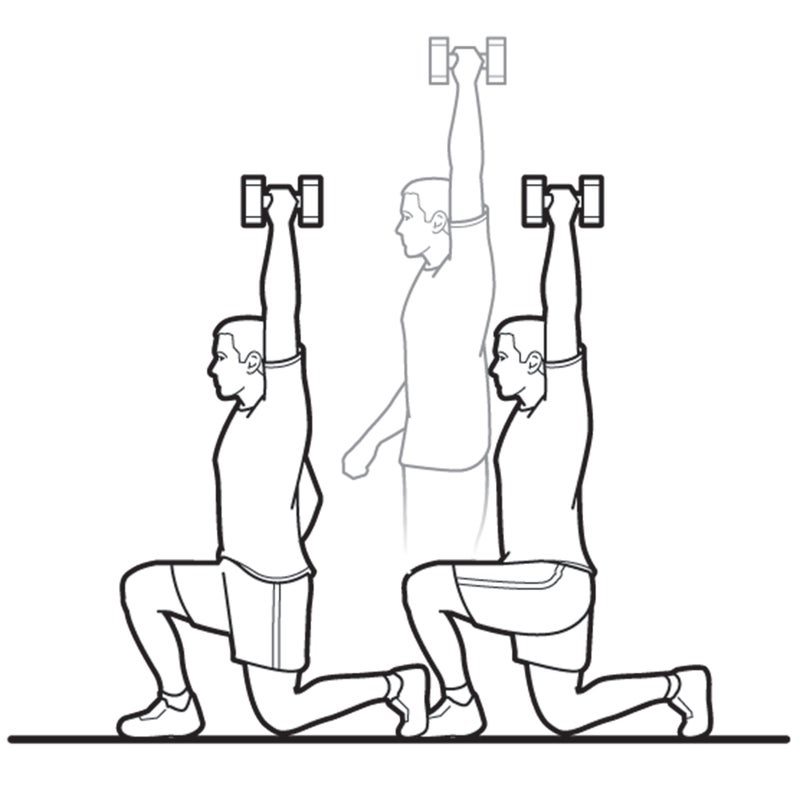
Raised-Arm Walking Lunges
In a field or gym, raise one arm above your head and connect 20ÔÇô40 lunge steps, keeping your arm straight and stretched high. Switch arms and walk back. Easy? Add a dumbbell or kettlebell (start light, adding weight as you progress). Do two sets.
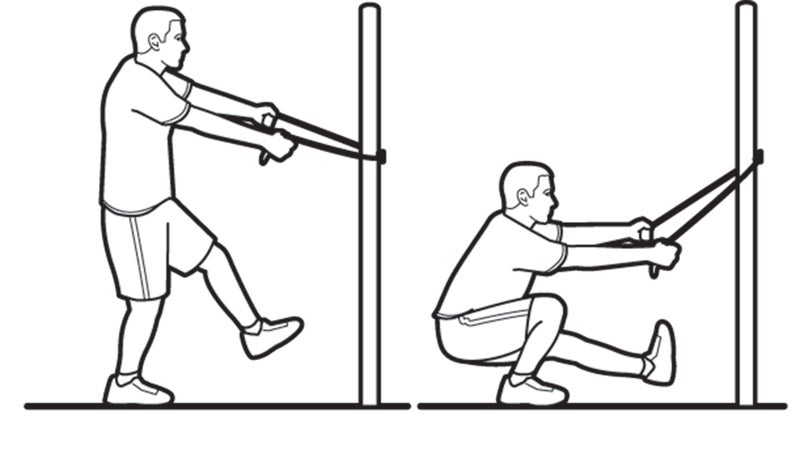
Assisted Pistols
Hitch a length of nylon webbing to a secure pointÔÇötree, post, etc.ÔÇö about waist high. Face the hitch point, grab the webbing with both hands, and lower on a single leg with the opposite leg lifting and pointing forward. Stand back up, using webbing for assistance. Repeat 7ÔÇô10 times on each leg.
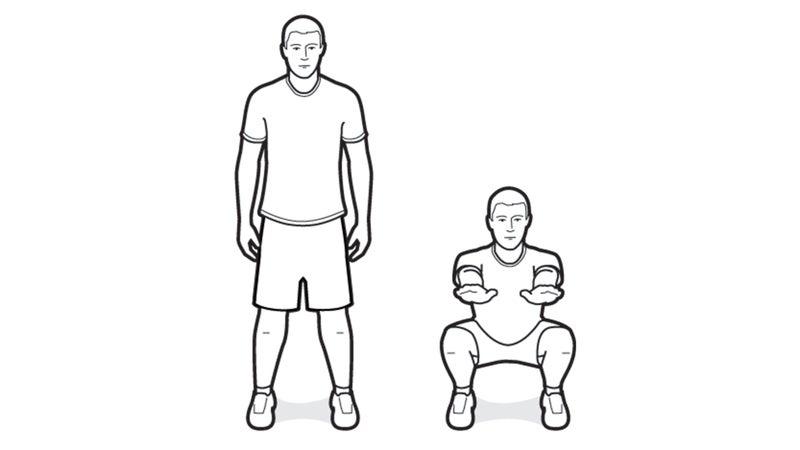
Body-Weight Squat Sets
Stand with feet parallel and shoulder width apart, drop into a squat, then come right back to standing, quickly and smoothly. Perform as many as possible for 20 seconds, rest for ten seconds, then repeat. Do eight sets.
Fitness Test #2: Core Stability
For most folks, core exercise is all about turning your snack pack into a six-pack. That's great if you're a Muscle & Fitness cover model, but if you're an athlete, it misses the point. What you want is core stability, achieved when your entire core┬Śfrom lower back to upper legs┬Śis equally strong. This will give you maximum control of your body and extremities during athletic movements.
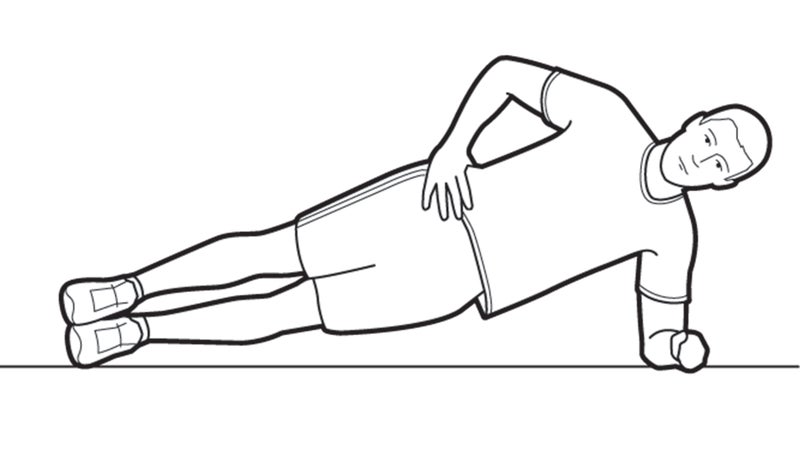
Side Plank
Lie on your side, supporting your weight on your elbow. Hold your body straight. If you can hold this for more than two minutes without sagging, you pass; less than two minutes, hit the Remedial Exercises (below).
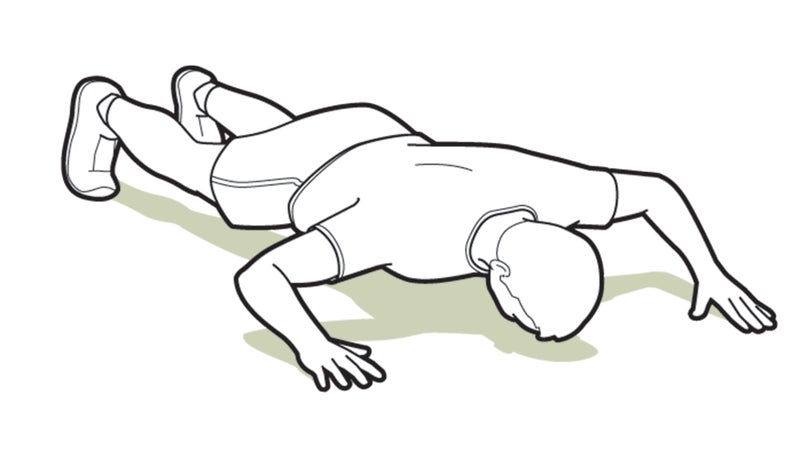
Stability Push-Up
Lie facedown on the floor. Extend your arms out from your shoulders, flat against the ground and bent 90 degrees at the elbows. Tighten your core while pressing through your hands, forearms, and feet until you rise off the floor in one board-flat motion into a slightly extended push-up position. If you have to roll up, you fail; if you can do it smoothly, you pass.
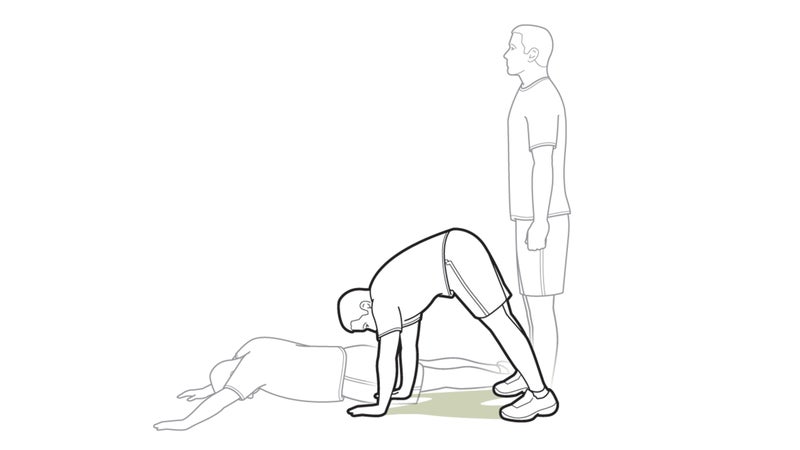
Inchworm
From a standing position, bend at the waist and place your hands on the ground. Keeping your arms and legs perfectly straightÔÇöyour heels don't have to remain flat on the groundÔÇöwalk forward on your hands until you're in a push-up position. Now walk your feet back up to meet your hands, keeping arms and legs straight, and stand back up. If you can complete the move without resting, collapsing, or sagging when outstretched, you pass.
Remedial Training
Complete this series at least twice a week
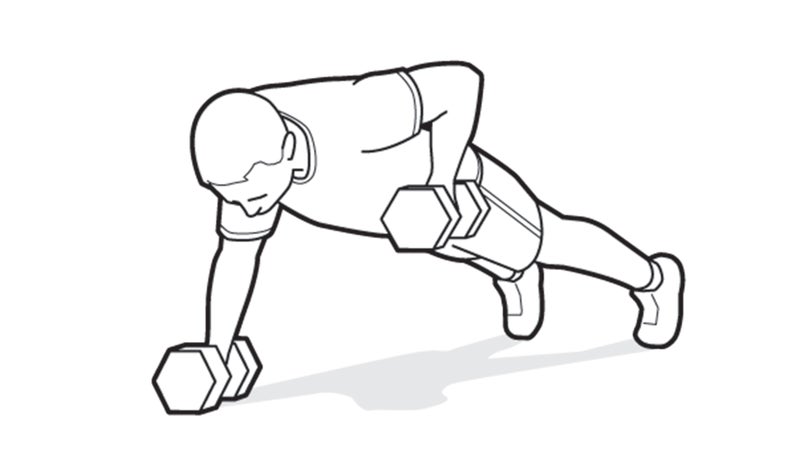
Renegade Man Makers
Grip two dumbbells of appropriate weight (start light), place them on the floor shoulder width apart, and assume a push-up position. Complete a full push-up, then pull the right dumbbell to your shoulder, then the left. ThatÔÇÖs one rep; do two sets of ten. Easy? Add more weight and/or add a ÔÇťburpeeÔÇŁÔÇöhopping your feet under you, then jumping upÔÇöat the end of each rep.
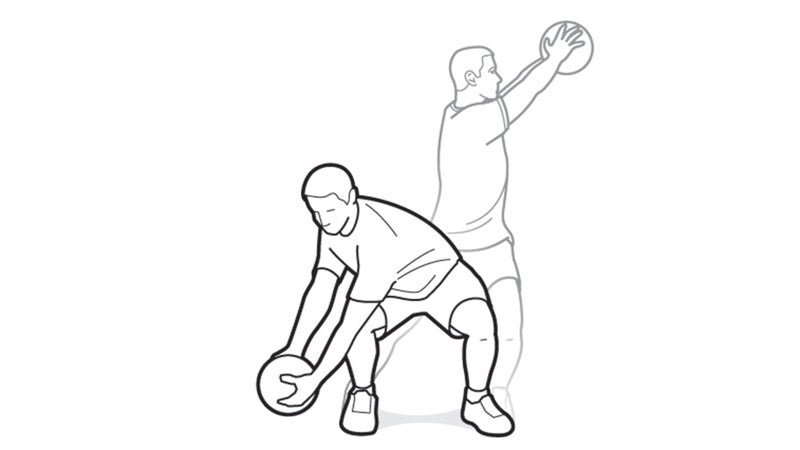
Wood Chops
With feet shoulder width apart, hold a dumbbell, medicine ball, or the handle of a cable machine with both hands above your head and out to one side. Swing the weight so it comes down to your opposite ankle, as if splitting a piece of wood with an ax. Keep arms straight and concentrate on rotating your torso. Ten reps each side.
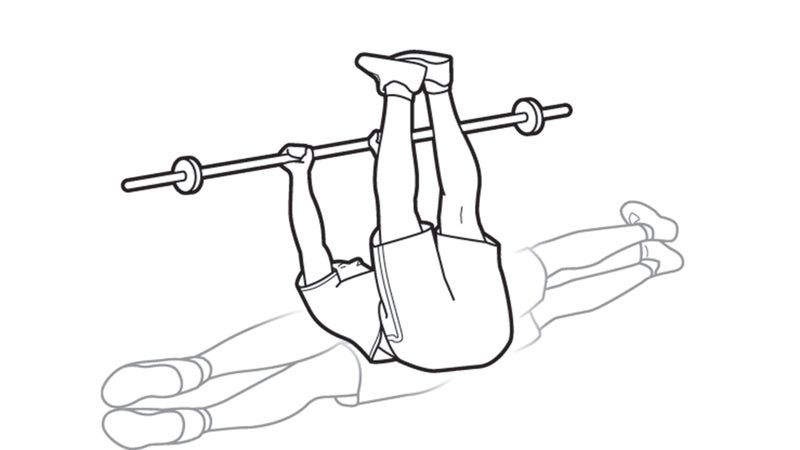
Windshield Wipers
With your back on the floor, hold an unweighted barbell or light dumbbells over your chest. Raise your legs so they form an L with your upper body. Keeping legs straight, feet together, lower your feet to the right side until they touch the floor, raise them back up, then repeat on left side. Three sets of ten reps (five each side), maintaining perfect form.
Fitness Test #3: Long-Range Power
Think power is just for linebackers? Think again. Power is simply energy production, whether it's over a short period (like explosive sprints) or a long one (say, charging up switchbacks while your buddies gasp for air). The latter is far more useful for outdoor adventure and sports than basic, slog-all-day endurance. You want speed and quickness but also sustained power output, so you have that fifth gear when you need it most.
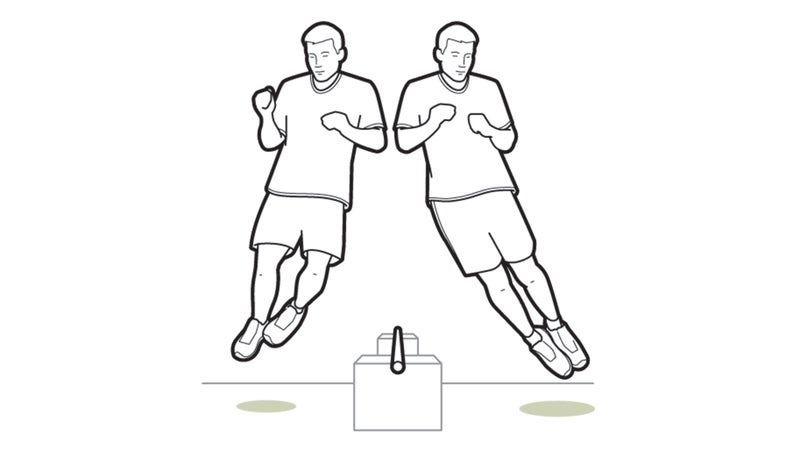
Multisport Gauge
A great test for ball-sports athletes. Set up a small hurdle two cardboard boxes and a dowel should work 12 inches off the ground. Hop from one side to the other as many times as you can in one minute. Rest 20 seconds. Repeat. Your score is the combined number of both sets. More than 70 is excellent; 50 70 is good; less than 50, see the Multisport Circuit (below).
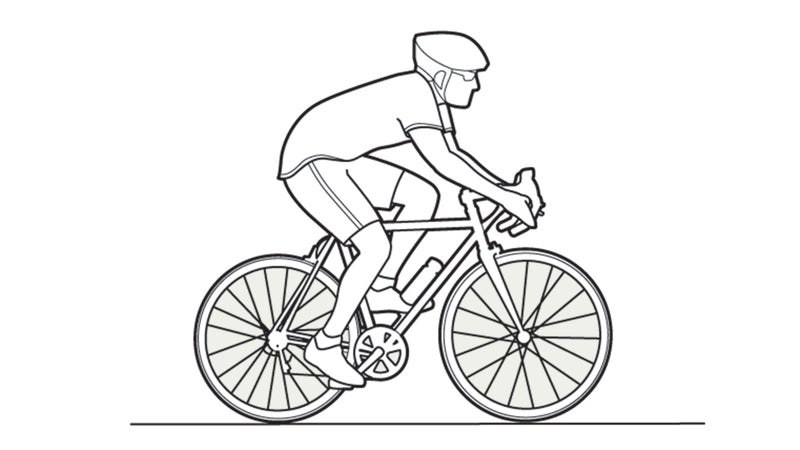
Cyclists' Threshold
You'll need a cyclometer and a heart-rate monitor. Find a flat, quiet stretch of road where you can pedal all-out. Do two eight-minute intervals with an eight-minute rest between. Note the highest speed and highest heart rate you sustained for at least a minute; you'll use these numbers for training later. Maintaining 25 mph or higher is excellent; 22-24 mph is good; less than 22 mph, make the Cycling Intervals (below) a cornerstone of your training.
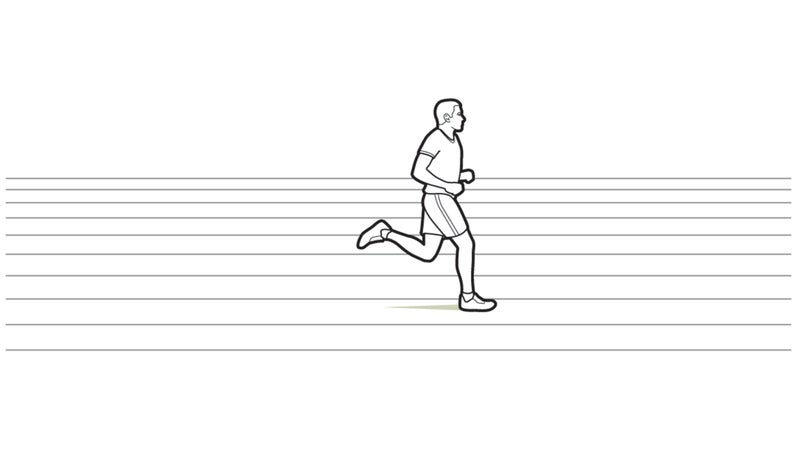
Runners' Threshold
Run two miles (eight laps on a track) as fast as you can. Clocking 12-14 minutes is excellent; 15-17 minutes, fair; more than 17 minutes, time for some Running Intervals (below).
Remedial Training 
Sport-specific drills to build power that lasts
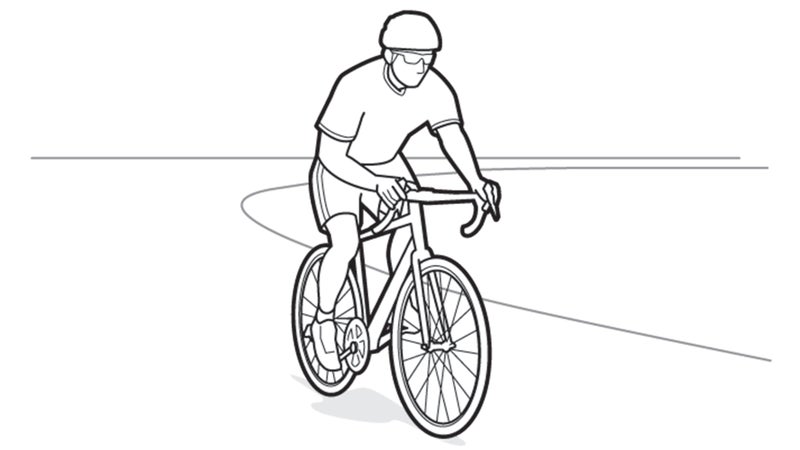
Cycling Intervals + Cadence Drills
On a flat road, do six to eight three-minute intervals at your threshold heart rate (the sustained rate from your cycling test), with three-minute rests between. Do this once or twice a week. One or two other days a week, do cadence drills: Crank at the highest cadence you can sustain (110ÔÇô120 rpm is good). Do 40 seconds on, 20 rest, repeating four times for one set. Do three sets.
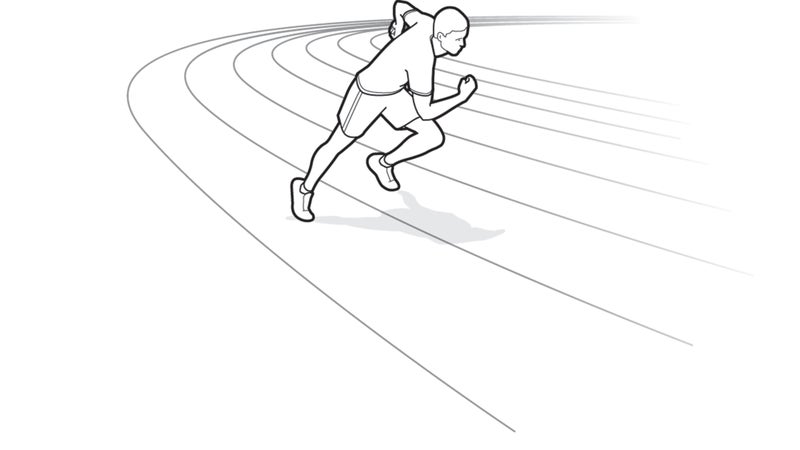
Running Intervals
Run 200 meters on a track as fast as you can; jog the same distance. Repeat for 400 meters, 800 meters, 400 meters, and 200 meters. Do once or twice a week.
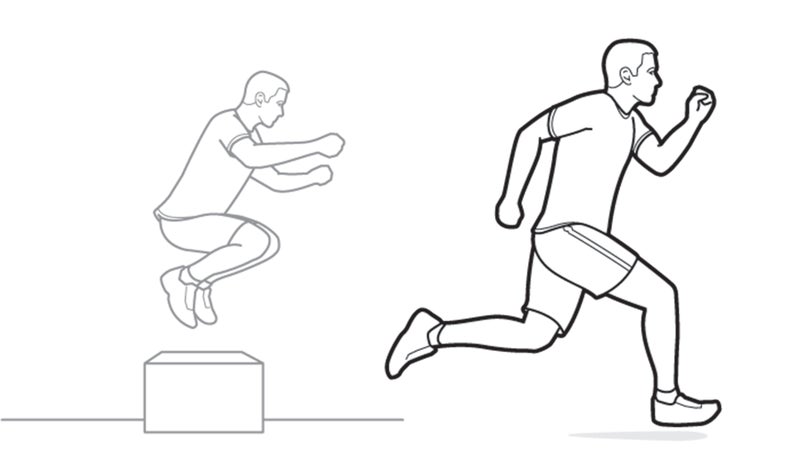
Multisport Circuit
Set up a box or platform 18ÔÇô24 inches high next to a track. Do 20 two-footed jumps forward onto the box (step back down), followed immediately by a 400-meter run, all out. Do four circuits, twice a week.
Fitness Test #4: Strength
Hauling a heavy pack uphill, clanging your mountain bike down rough singletrack, carving a super-G turn on an icy slope strength is about controlling your body and managing the forces that come to bear on it. But make strength training a focus only after you've developed flexibility, core stability, and long-range power. It's the armor you put on last. (Note: If you're new to lifting, have a trainer run you through these tests and get you started on any of the Remedial Training exercises.)
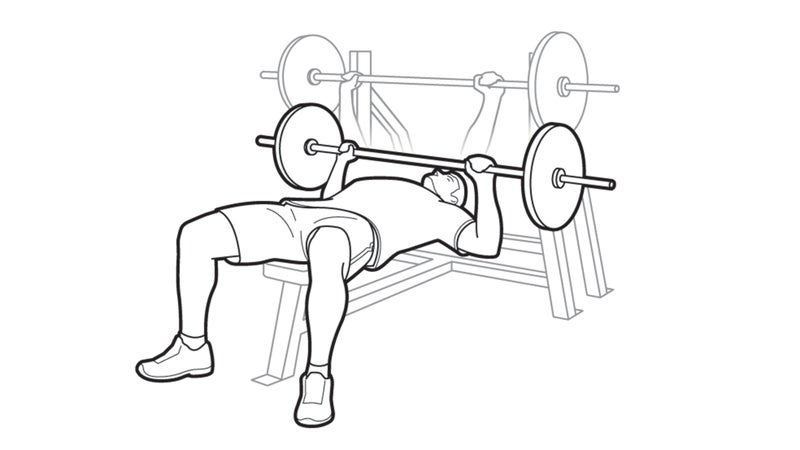
Bench Press
On a horizontal bench, lower the bar to your sternum and lift all the way back up. The goal is to press 85 percent of your body weight ten times with perfect form (no back arching or chest bouncing).
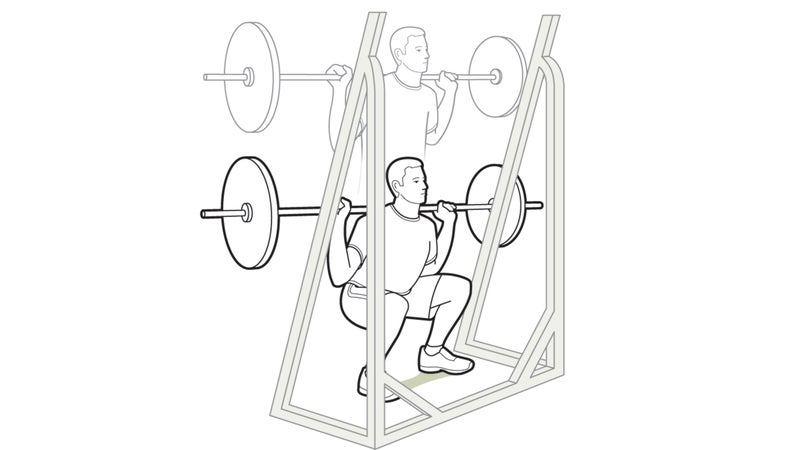
Back Squat
Using a free-weight squat rack, load the bar with the most weight you can handle while maintaining perfect squat form (as a starting point, try lifting 50 percent of your body weight). Support the bar across your upper back, an inch or two above the tops of your shoulder blades. Place your feet shoulder width apart, with your knees above your toes, and look forward. Lower by easing your butt back, while keeping your lower back arched, not rounded. Continue lowering until your thighs pass parallel. Stand back up. You pass if you can lift 100 percent of your body weight ten times, with perfect form.
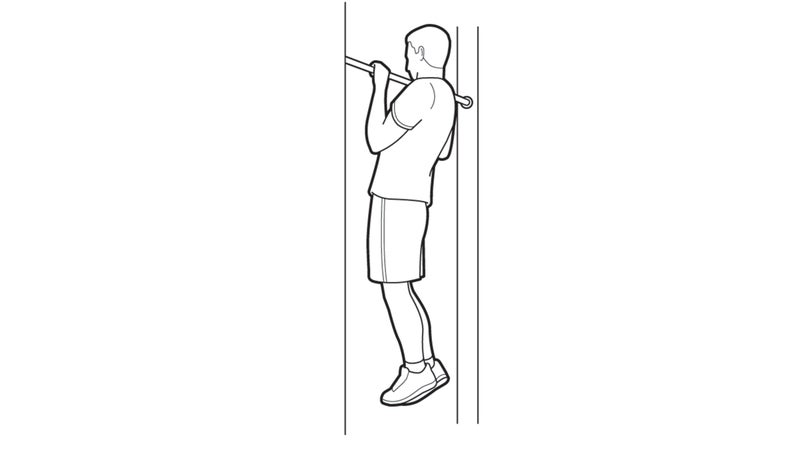
Pull-Ups
Using an overhand grip, hands placed a little more than shoulder width apart, pull yourself up until the bar is at the base of your neckÔÇöreally, that far. Repeat. If you complete 15 without releasing the bar, you pass.
Remedial Training
Do this sequence three times a week, with one rest day between
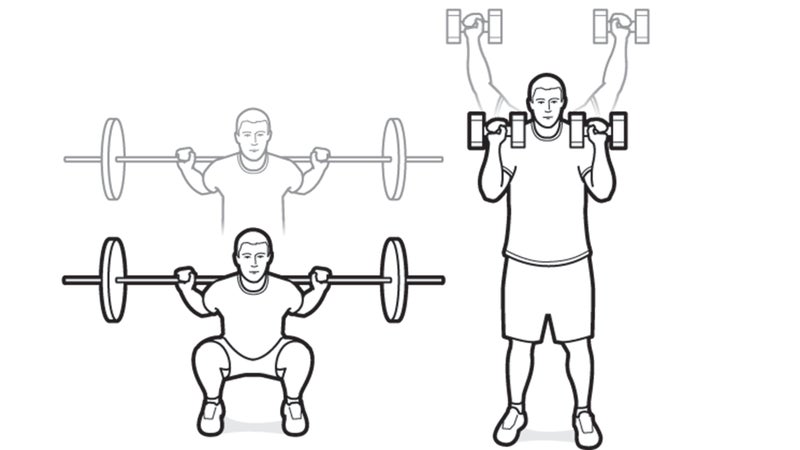
Squat Pyramid with Shoulder Press-Ups
For squat form, see the Back Squat test. For press-ups, hold dumbbells at your shoulders, then press straight up over your head. Do ten squats, followed immediately by ten press-ups. Then do nine squats followed by nine press-ups, and so on, until you get to one. Err on the light side with the weights; both moves should start easy but be very tough by the end.
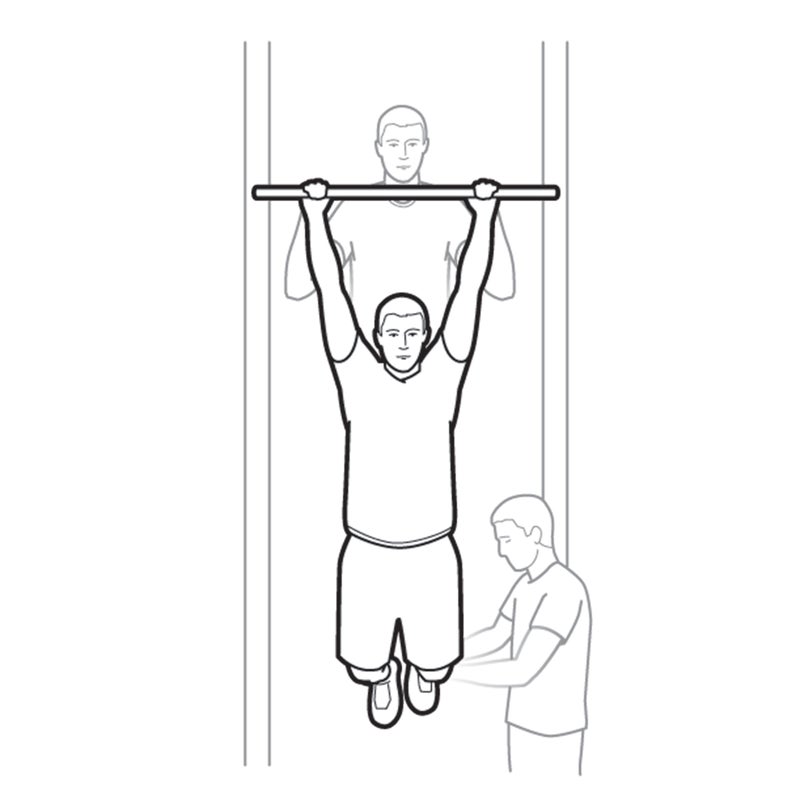
Pull-Up Ladder
Do ten pull-ups, then nine, then eight, and so on, until you get to one, resting a minute between each set. Once you reach exhaustion, have a buddy boost you by lifting your feet slightly so you can complete the set.
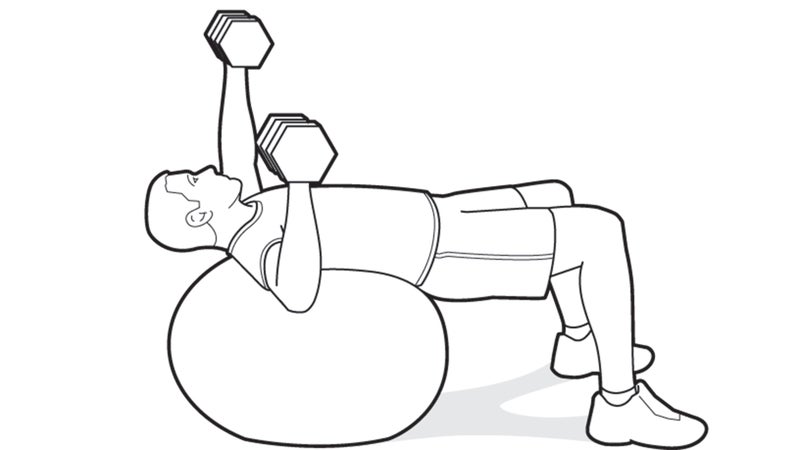
Chest Press on Stability Ball
Lie with your back on a stability ball. Hold dumbbells at chest level and press up one hand at a timeÔÇöthatÔÇÖs one rep. Do four sets, increasing the weight but lowering the reps each time (for example, 10 reps x 30 lbs, 8×40, 6×50, and 4×55).
Body of Evidence
The research is in, and the conclusions are clear: Many of our old athletic habits are bad for us, and much of what we think we know about sports science is wrong. Here, a guide to rediscovering your body's pitfalls and potential.┬áÔÇöGretchen Reynolds
Brain
It's well known that brains benefit from workouts. Exercise jump-starts the creation of new brain cells and increases cognitive ability. But what kind of exercise is best? In one of the first studies of its kind, published in April, students at the University of Illinois performed significantly better on memory and judgment tests immediately after 30 minutes of intense aerobic exercise than after either weight training or, for that matter, sitting quietly.
Eyes
If your sport of choice often exposes your eyes to bright sunlight, have another espresso. In an experiment last year, scientists bombarded mouse eyeballs with UV light. The lenses predictably clouded with cataracts. But when they bathed the eyeballs with caffeine before exposing them to sunlight, the UV damage was almost completely eliminated. Researchers speculate that xanthinoid compounds found in coffee and tea protect against sun damage in the eyes.
Mind
Turns out distraction is a performance enhancer. In a study by the University of Chicago, athletes told to concentrate on a word unrelated to their sport performed well under pressure. Asked to think, instead, through the steps of what they were about to do, they flubbed up almost every time. Intellectualizing may overtax the mind's limited working memory.
Teeth
Sports drinks good for hydration, not so much for teeth. Earlier this year, New York University dentists found that cows' teeth soaked for 90 minutes in sports drinks containing high levels of citric acid (as most sports drinks do) softened and started to dissolve. Often imbibe? Ask your dentist if you need acid-neutralizing toothpaste.
Rotator Cuffs
A first-of-its-kind study published in May by researchers at the University of Utah School of Medicine uncovered a strong familial link to rotator-cuff tears. Even one family member with the injury increases your risk. The researchers are now trying to pinpoint exactly which genes influence the joint's fragility. In the meantime, kayakers and rowers, whose shoulders are under especially high stress, might want to check their family history. If you've got weak rotator cuffs in your genes, ask an athletic trainer to set up a prophylactic regimen of shoulder-strengthening exercises.
Stomach
Hunger might not always come from an empty tank. In a recent experiment out of Britain, groups of fit cyclists were given different drinks during an intense time trial. Some contained sugar, others┬ámaltodextrin┬á(a tasteless carbohydrate), and others just plain water (all were flavored similarly). The cyclists were asked to swish the liquids in their mouths and spit them out. Those who swished the sugar- or carb-filled waters cycled much faster than those who received the plain water. Researchers speculate that fatigue may depend, in part, on signals taste buds send to the brain that say, “Energy is available,” whether any calories reach the stomach or not. Fatigue, in other words, may be partly in the mind.
Hips
Pain-racked knees? The culprit may be weak hips. Puny hip muscles have popped up in recent studies as the underlying cause of “runner's knee,” or patello┬şfemoral pain syndrome, the most common overuse injury in runners. Weak hips also have been linked to┬áiliotibial-band┬átightness, another frequent knee complaint in runners and cyclists. The solution, according to a study published in Clinical Biomechanics, may be weight training targeting the hips. After six weeks of hip work, the runners in the study had┬ábiomechanically┬áimproved strides and less knee wiggle, which should “reduce injury risk.”
Knees
The good news: Distance running might actually be good for your knees. In research published last year, runners in their sixties and seventies had less knee arthritis than age-matched sedentary types. The bad news: Past knee injuries, especially ligament tears, can forever alter gait mechanics. A study published by Stanford in February concluded that even slight changes cause portions of the joint to rub together, wearing away cartilage, leading to arthritis, and leaving you hobbled.
Collarbones
Easy to crack, as Lance Armstrong recently learned. Doctors once let many broken clavicles heal without surgery. But recent studies have found lingering shoulder disabilities in some of those whose bones weren't pinned. If your clavicle fractures, consult an experienced sports orthopedist┬Śsurgery may get you back to pre-injury peak performance faster.
Gut
Distance runners and competitive cyclists, in particular, are prone to colds and upper-respiratory infections. Scientists are only beginning to untangle the complex interactions of exercise and immunity, but recent studies suggest that introducing good gut bugs may right some of the damage. According to a 2008 British Journal of Sports Medicine report, elite distance runners who ingested large doses of the probiotic Lactobacillus fermentum fell sick only half as often as a group taking a placebo.
Lower Back
Creaky backs afflict even the fittest; maybe especially the fittest. One recent study found that Australian Olympians have “significantly more severe” spinal-disk degeneration than non-athletes of the same age, while another concluded that 65 percent of cross-country skiers complained of back pain. A comprehensive review of back pain published in February's Spine journal reported that stress management, shoe inserts, lumbar-support braces, and weight lifting weren't that effective. The only verifiable remedy? Carefully supervised back-exercise programs.
Fingers
Long ring finger? Lucky you. In March, researchers at England's Southampton University reported that boys whose ring fingers stuck out past their index fingers were much faster in 50-meter sprints than the rest of the field. Other studies show a correlation between elongated ring fingers and distance-running ability. Scientists think testosterone levels in utero influence digit growth and, perhaps, athletic ability.
Hamstrings
Tight hamstrings too often end in agonizing pulls among sprinters, soccer players, and marathon runners. Recent studies suggest that hamstring inflexibility contributes to knee problems, too. OK, so stretch your hamstrings. But a March study from the Rehabilitation Institute of Chicago found that some stretches are better than others. Proprioceptive neuromuscular facilitation (PNF), in which you actively contract and relax the muscle, improves hamstring flexibility at first. But longer-term passive stretches, in which a partner raises and gently pulls and stretches your leg, result in the greatest increases in hamstring length and flexibility.
Feet
Must running shoes be expensive? Not according to a new, recession-smart study in the British Journal of Sports Medicine. Researchers from the University of Dundee purchased three different pairs of running shoes at three different price points, then had 52 runners put them through a series of comfort and function tests. The result? The expensive shoes performed no┬ábetter than the┬ácheapo┬áshoes, especially in tests of “cushioning of plantar pressure,” or forefoot cushioning, an important measure of running-shoe function.
Icons
Landon Donovan 
All-Time Leading Scorer, U.S. Men's National Soccer Team
“I started working on functional flexibility about a year ago, and it's completely changed the way I play. Within a few weeks, I felt faster and stronger, and it seemed like I could pull energy from places that I'd never been able to before. There was a point where I just said, ÔÇśAha! This is real. This is actually helping me.' “
Laird Hamilton 
Big-Wave King
“Core conditioning is central to all my board sports; I work on it almost every day. I hardly ever do straight crunches, because that's all about what shows on the outside. The really important stuff is inside: the muscles that support the spine, that kind of thing. That's where you're vulnerable.”
│Ď▒┤ă░¨▓Á▒╠ř▒ßż▒▓ď│Ž▓╣▒Ŕż▒▒╠ř
13-Time Tour De France Veteran
“I started focusing on power back in 2000, and it really helped. I improved on climbs almost immediately, and I wouldn't blow up as quickly when I had to put forth a hard effort in a sprint or breakaway. I do power-based intervals, typically three to four days a week, with a lot of variety.”
Michael Johnson 
Sprinter, Four-Time Olympic Champ
“Incorporating an overall-strength-training program into my routine was one of the key things that helped me achieve such consistency and longevity throughout my career. Upper- and lower-body lifting made me more powerful and balanced, with fewer injuries, so I could do higher-quality training and get faster.”
